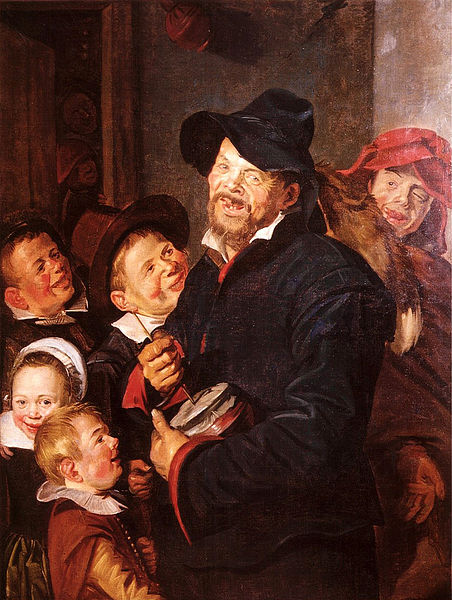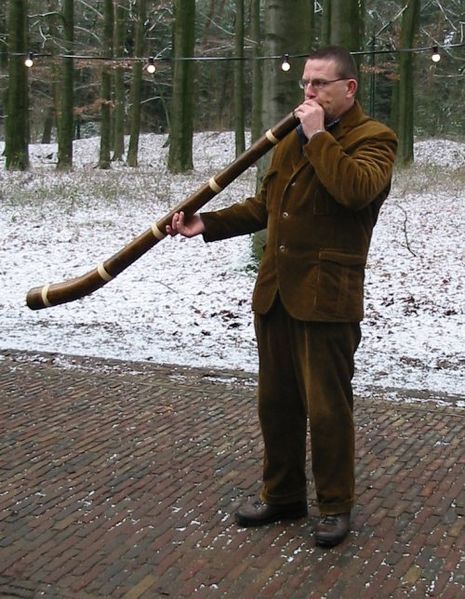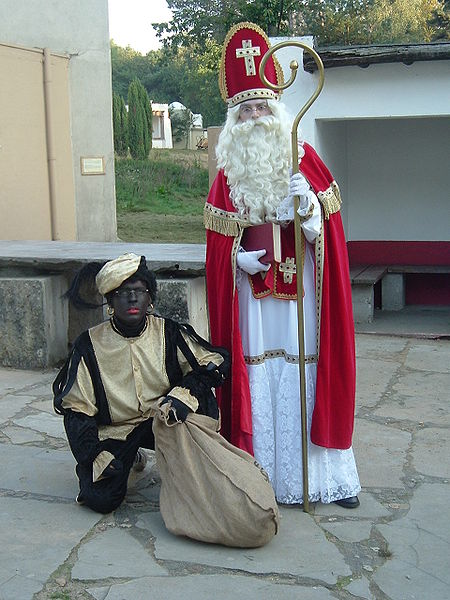In this story we present some old Dutch Christmas and New Year traditions in the way they are remembered by Han Tiggelaar. Most of these traditions have faded away in many places and survived only in a few districts.
One of them is playing the rommelpot (a self-made primitive traditional music instrument that creates a characteristic sound. In catholic areas it is called a foekepot).
Frans Hals, The rommelpot player (Antwerpen 1583 – Haarlem 1666).
The other is making a “donderbus”, but most people do not know about it anymore.
A small Rommelpot
The time of rest and silence
This period started in old days on the 5th evening of December (today the 4th Sunday before Christmas) and ended on the 6th of January, the day of the returning light (sun). In some districts at sundown people still blow, in this period, the “midwinter” horn to let people hear the day gets longer again. There are still three types of this karnik (winter-horn).
Learning to blow in a village (a village exam).
Sinterklaas
Dutch Sinterklaas is very special as he arrives in the Netherlands in November and disappears… on the 6th of December. Why is that and what he is doing while he stays in the Netherlands one can read in a special story Santa Claus.
Christmas – the “holy” evening
The Dutch have their moments of joy and gifts on the evening before the St. Nicolaus day. A traditional Christmas Eve is totally different. At this moment they experience solemn quite holy hours. The candles are burning on the Christmas tree, the old stories are read aloud by a few members of the family, old songs are sung and the Dutch go to their churches and sing their psalms and Christmas songs. Their society comes to a standstill, rest and quietness is ruling. These are the days of peace to them, the days they spend with their families. Married people used to visit their parents in two days: one day – for one family and the second one – for the other, with a good friend or just as a family. A soft tear is dropped down on the reflection of the sad moments of the passing year and after that a smile comes for the good things and for the hopes of the next year. Above all, if it is a rare white Christmas, families walk in the dark to enjoy the snow and in their concerthalls and churches they sing:
Silent Night & be welcome & a little child is born & Gloria in excelsis Deo & Honour to God so high, peache on Earth & Come all together & Night in Bethlehem, etc.
The “good” evenings
Then the time of reflection comes. The last work is done to the house and the stables, the last trees are trimmed, the last blocks of wood are cut and piled up, the year gets done, “the books are closed”. It is a leftover of making the ancient god Wodan happy when he comes, riding on his 8-legged horse Sleipner in the air, to inspect (with his two birds) how people are handling their “gifts of the gods” (house, family, cattle and fields). Many visits are made in the “long” evenings. Friends and family members are visited or come to visit. The speed of life greatly slows down. The amateur clubs have their evenings to show proudly gymnastics, music, dances and other abilities they have learned in the recent years.
New Year’s eve
In the past children walked along the houses with their “rommelpots”, singing songs at the house doors. They were rewarded by little coins and sweeties (a symbolic way of showing that something is important). The coins were used to buy little fireworks. (Older people made the heavier “donderbussen”, using carbide and old milk containers for that). Late in that evening people got together on a small road crossing or small village squire, bringing their Christmas trees and putting them in a pile. They started singing and at 24:00 the trees and the fireworks were lit. The noise, the smoke and the fire are supposed (according to old belief) to scare bad gods and powers and keep them away from the new born year.
New Year’s Day
On New Year’s Day everyone brings good wishes to everyone. Gifts are given to little children and (poor) strangers.
Han Tiggelaar
Photo: Wikipedia



